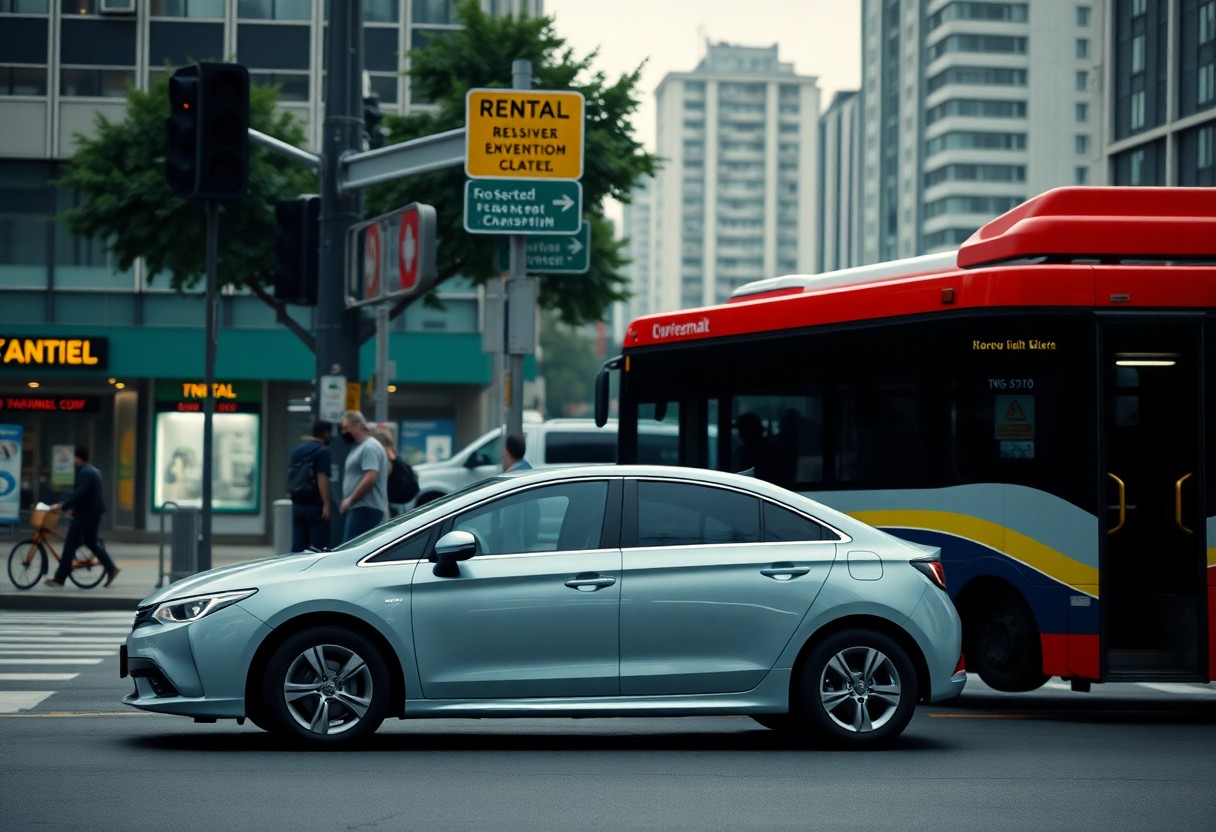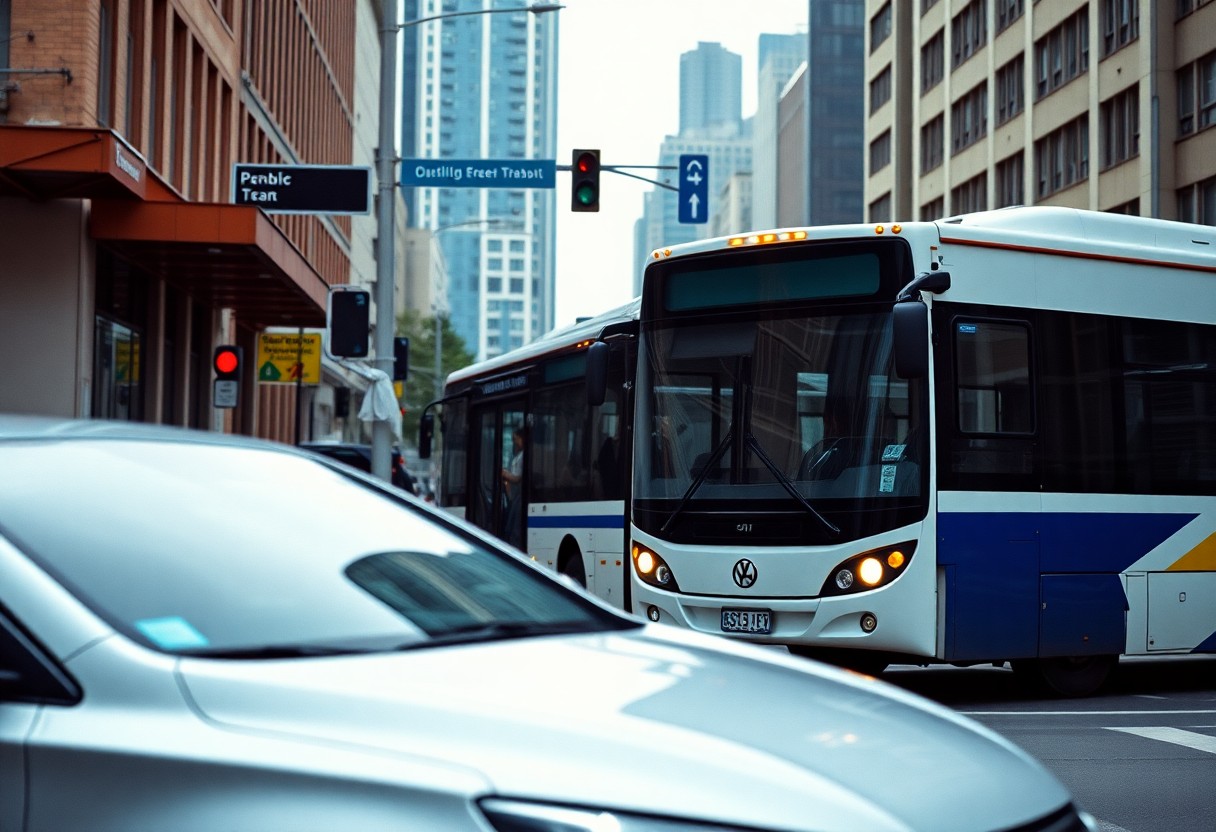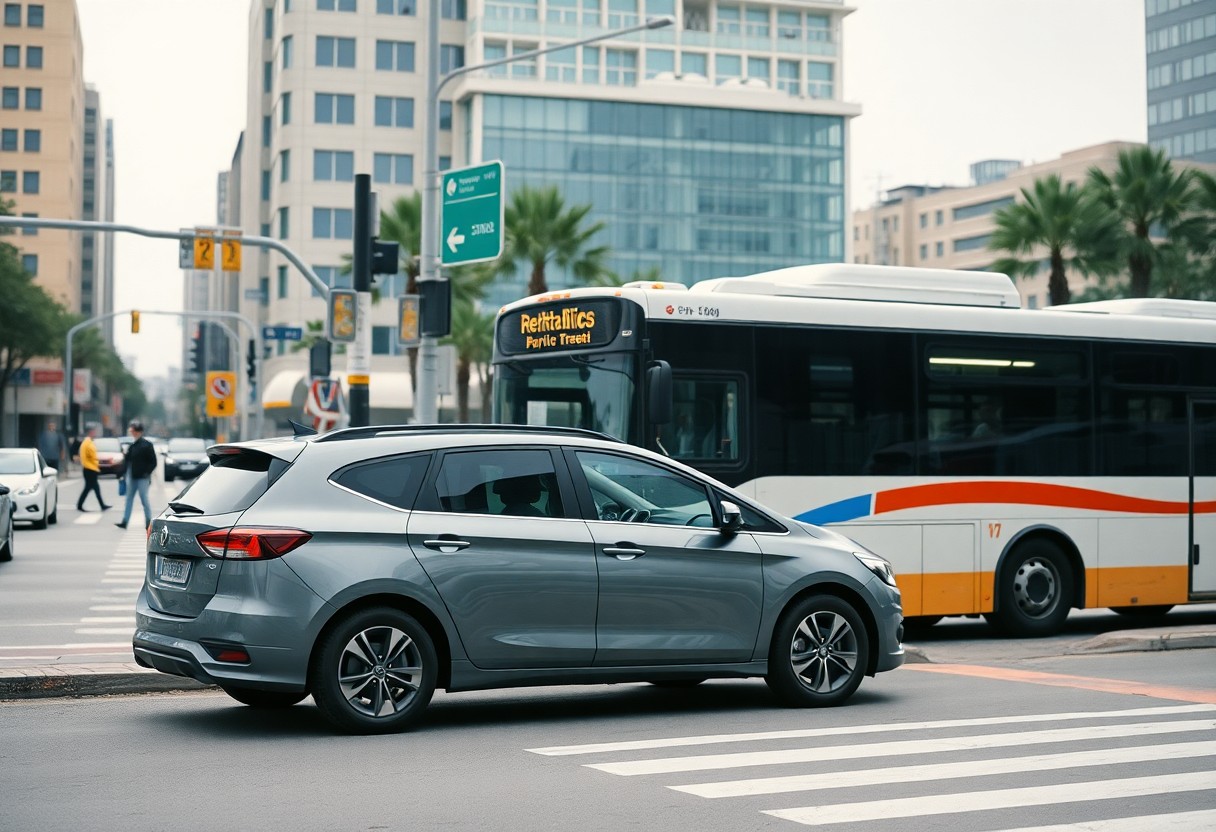As travel costs continue to rise and personal time becomes increasingly valuable, choosing the right transportation method for your journey is essential. This decision greatly affects your budget and the overall quality of your travel experience. When planning your next trip, you’ll face the choice between the freedom offered by a rental car and the cost-effectiveness of public transportation. Your final choice will depend on several factors, such as your travel destination, your planned itinerary, and the number of people traveling with you. This detailed guide is crafted to help you explore the critical considerations, including hidden rental fees and public transport accessibility, ensuring you make a well-informed decision tailored to your travel needs.
Unlock Your Travel Potential with the Freedom of a Rental Car
The independence gained from having a rental vehicle opens up a plethora of travel possibilities. By choosing a rental car, you take full control of your travel itinerary and can explore destinations that lie off the beaten path, far from typical tourist hotspots. Recent research reveals that 73% of travelers prefer rental cars for their flexibility, making this option particularly attractive for those who value spontaneity and freedom during their travels. With the ability to adjust your plans on the fly, you can discover hidden gems and create lasting memories on your journey.
Explore the Advantages and Limitations of Renting a Car
Once you secure your rental vehicle, you’ll enjoy newfound freedoms along with some limitations. You can venture into remote areas and adjust your schedule at will, but be mindful of potential parking fees, which can average between $25-45 daily in busy urban environments, and the navigation challenges you may encounter. Your rental car serves as a personal retreat, yet you will also bear the responsibility for fuel costs and managing traffic conditions independently. Understanding these factors will help you maximize the benefits of your rental while minimizing any inconveniences.
Uncovering Hidden Fees and Discovering Unexpected Savings
While the freedom associated with a rental car comes at a cost, it also offers unexpected financial advantages. Although initial rental rates may seem high, it’s crucial to consider that group travel can be significantly more economical than purchasing individual tickets for public transportation. Recent statistics show that families of four or more typically save between 15-20% on transportation expenses by opting for a rental vehicle instead of public transit. Evaluating the overall costs will help you make a more informed choice.
A deeper analysis of the financial elements reveals additional considerations that may impact your budget. Insurance fees can add $15-30 per day to your rental total, but many credit card companies offer rental car protection, potentially saving you money. Furthermore, the fuel efficiency of modern rental fleets (averaging around 30-35 MPG) can help offset overall costs, while the convenience of door-to-door travel saves you precious vacation time.

Navigate the Urban Jungle: Mastering Public Transportation
If you decide to rely on public transportation, understanding the system should be your first step. Most major cities now offer user-friendly transit apps that aid with route planning, real-time arrival tracking, and ticket purchases. Familiarizing yourself with the local transit network is essential, including bus routes, subway lines, and transfer stations. Research indicates that 55% of urban travelers save as much as 30 minutes per trip by using transit applications, enhancing their overall travel experience and efficiency.
Understanding the Unique Landscape of Urban Public Transit
Each city's public transportation system has its own unique patterns and operational rhythms. Expect to encounter peak hours, typically between 7-9 AM and 4-6 PM, when ridership is at its highest. Therefore, your navigation strategy should include alternative routes, as delays are common during these times. Incorporating a buffer time of 15-20 minutes for important appointments will help ensure you arrive on time and reduce the stress of unexpected delays.
Engaging with the Social Fabric of Public Transit
Beyond practical considerations, utilizing public transportation offers a unique social experience. You’ll share your journey with both locals and fellow travelers, allowing you to immerse yourself in the city’s true essence. While this may lead to occasional uncomfortable situations, it also provides invaluable cultural insights. Research shows that regular public transit users develop enhanced social adaptability skills as they navigate various social interactions throughout their travels.
Throughout your public transit experience, you may find yourself navigating diverse social scenarios. From the bustling energy of rush hour to the quiet solitude of late-night rides, each time period presents its own atmosphere. Safety is particularly important during off-peak hours, so staying vigilant and choosing well-lit, populated areas for waiting is crucial. Most transit systems now feature 24/7 security monitoring and emergency communication systems to enhance passenger safety while traveling.
Analyzing the Financial Aspects of Your Transportation Decision
When evaluating your travel options, budgeting is a critical factor in choosing between rental cars and public transport. Your transportation costs can vary significantly depending on your destination, trip duration, and the size of your travel party. While rental cars offer greater flexibility, they also come with hidden expenses such as insurance, fuel, and parking fees. Conversely, although public transit may appear less costly upfront, frequent daily rides can quickly add up over time.
Breaking Down the Comprehensive Costs of Driving
A thorough financial analysis of car rentals reveals expenses that extend beyond the daily rental fee. You should factor in $30-50 daily for insurance, average fuel costs of $40-60 per tank, and potential parking fees that can reach $50 per day in major cities. Consequently, your total daily travel costs could range from $100-200, making this option more financially viable for group travelers.
Deciphering the Cost Structure of Public Transit Tickets
At first glance, public transportation seems to be the more budget-friendly choice. In cities like New York, where average metro cards are priced at $34 for unlimited weekly rides, significant savings can be realized compared to the total costs associated with renting a car. Additionally, you can avoid extra charges such as parking fees and fuel costs, making public transit especially suitable for solo travelers looking to save money.
Cost comparisons show that weekly public transport passes in many major cities range from $25-40, providing unlimited rides. However, for families or groups of four or more, the total cost of multiple transit passes may exceed the expense of a rental car, particularly when planning extensive daily travel or trips to areas with limited public transport options.

Maximizing Your Travel Efficiency through Time Management
As you weigh your options between rental cars and public transport, it’s vital to prioritize your schedule. A rental car enables direct, point-to-point travel, potentially saving you up to 40% of your travel time compared to public transportation. Your time is invaluable – while public transport may initially seem cheaper, it’s essential to factor in the hours spent waiting, transferring, and walking to and from stations, which can significantly impact your overall travel experience.
Enjoy the Benefits of Flexible Scheduling with Rental Cars
When it comes to scheduling flexibility, a rental car offers you complete autonomy over your travel timetable. You are free from strict transit schedules, allowing you to make spontaneous detours or adjustments as needed. This level of freedom is particularly invaluable when plans change unexpectedly or when you discover hidden attractions during your travels that you wish to explore further.
Facing the Challenges of Public Transport Schedules
One of the main challenges associated with public transportation is adhering to fixed schedules. Studies indicate that 23% of urban buses do not run on time during peak hours. Your journey may require multiple connections, and delays in one service can create a domino effect, disrupting your entire day’s itinerary. To navigate public transport effectively, it’s wise to allow for extra buffer time. Transport experts recommend adding 15-20 minutes to your estimated travel time for each connection. During rush hours or special events, consider doubling these buffer times, as they can significantly affect how much time you have for activities.
Considering the Environmental Impact of Your Travel Choices
When evaluating your transportation options, it’s crucial to acknowledge the environmental ramifications of your decisions. A single-occupancy rental car emits approximately 404 grams of CO2 per mile, while public transportation can reduce emissions by up to 45% per passenger. The choice between renting a car and using public transport creates a lasting environmental footprint, which is vital to consider during your travel planning.
Understanding Your Personal Carbon Footprint
Each mile you travel directly impacts climate change and environmental degradation. A fully-loaded bus can replace the need for 50 individual cars on the road, significantly lowering overall carbon emissions. Your journey in a rental car can produce 4-5 times more CO2 than an equivalent trip via bus or train, although choosing electric or hybrid rental options can help mitigate this environmental impact.
Exploring Sustainable Transit Alternatives
Upon reaching your destination, you’ll have access to a variety of eco-friendly transportation options. Electric car rentals can reduce your carbon footprint by as much as 50% compared to traditional vehicles. Additionally, many cities are now equipped with hybrid buses and electric trams, making public transport an increasingly sustainable alternative. Adopting a mixed-method approach can be beneficial – rent an electric or hybrid vehicle for longer trips while utilizing public transport in congested urban areas. Numerous rental agencies now offer green vehicle options, allowing you to travel while minimizing your ecological impact.

Enhancing Comfort and Convenience During Your Travels
Unlike public transportation, rental cars provide complete control over your comfort settings. You can easily adjust the climate, seating arrangement, and audio preferences to suit your personal taste, creating a customized travel environment. This level of personalization becomes especially vital during extreme weather conditions or lengthy drives, where overall comfort can significantly enhance your travel experience.
The Benefit of Personal Space in Your Rental Vehicle
One of the most significant advantages of renting a car is the guaranteed personal space it provides. You won’t have to deal with crowded buses or trains, where personal space often shrinks to a mere 4 square feet during peak travel times. Your rental car becomes a private sanctuary, allowing you to maintain complete control over who shares your travel environment, leading to a more enjoyable journey.
The Unpredictable Comfort Levels of Public Transportation
Comfort levels on public transit can vary greatly due to factors beyond your control. During peak hours, you may find yourself squeezed in with 150-200 passengers in a single subway car, dramatically diminishing your comfort levels. The experience often requires standing for long periods, especially during the average 38-minute commute in major metropolitan areas.
During typical rush-hour scenarios on public transport, you might encounter noise levels reaching around 80-90 decibels, akin to heavy city traffic. These conditions, compounded by unpredictable delays and service interruptions, can make your journey less enjoyable and more stressful, particularly when traveling with luggage or in larger groups.
Choosing the Ideal Transportation Option for Your Unique Needs
Ultimately, your decision between renting a car and relying on public transport should be grounded in your specific travel needs. If your priorities include flexibility and comfort while traveling with family or friends, a rental car is often the best value, even considering the higher initial costs. Conversely, public transportation can be an excellent option for solo travelers on a budget who plan to stick to well-established routes in urban areas. It’s essential to weigh factors such as your destination, group size, planned activities, and overall budget. By carefully evaluating these elements against your personal preferences, you can identify the transportation option that best aligns with your travel objectives.
The Article: Renting a Car vs. Public Transport: Which is Best for Your Trip? appeared first on https://rentacar24.org/
The Article Renting a Car vs. Public Transport: Choose the Best Option for You Was Found On https://limitsofstrategy.com



You’ve raised an important point about the balance between freedom and cost-effectiveness in travel. I recently faced a similar dilemma during a trip to Italy. Initially, I leaned towards using public transportation due to the savings, but I found that certain regions, especially in the countryside, had limited access to train services. Ultimately, a rental car gave me the flexibility to explore hidden gems like small towns and scenic routes that public transport would not have reached.
You’ve really tapped into a crucial aspect of travel planning here! I’ve found that the choice between a rental car and public transportation can often hinge on the kind of experience you’re after. For instance, during a recent trip to a national park, having a rental car allowed me to explore off-the-beaten-path trails that I wouldn’t have access to otherwise.
It’s really interesting to hear your experience with choosing a rental car for your national park adventure. That flexibility is definitely one of the highlights of having your own wheels. I find that the freedom to veer off the main roads can lead to some of the most rewarding experiences, like stumbling upon hidden gems or quieter spots where it feels like you have the whole place to yourself.
I completely agree with you about the rewards of having that flexibility on a road trip. There’s something special about taking the less traveled path and discovering those hidden gems that you just wouldn’t find in a guidebook. I remember one trip to a national park where we stumbled across this small, secluded waterfall. It wasn’t marked on any maps, and there were only a couple of locals around. We ended up spending hours just enjoying the tranquility—it really felt like a little slice of paradise.
Your experience with the hidden waterfall sounds incredible; there’s something magical about those moments when you stumble upon a spot that feels completely untouched. I think one of the true joys of traveling—especially on a road trip—is that spontaneous connection to nature and the unexpected surprises along the way. It’s those places that often resonate the most with us, isn’t it?
“That sounds like an incredible experience! If you’re looking for more tips on discovering hidden gems like that, check out this guide we put together—it’s all about embracing the adventure off the beaten path!”
https://forgottenportal.com/ninja
You’ve really tapped into a crucial aspect of travel planning here. I completely agree that the choice between a rental car and public transportation can shape your travel experience significantly. Having a car in a place like a national park can lead to those unexpected adventures, like stumbling upon lesser-known trails and hidden viewpoints.
This topic resonates with me deeply, especially as I find myself planning an upcoming trip. The balance between the freedom of a rental car and the cost-effectiveness of public transportation is a dilemma I often face. Last summer, I opted for a rental car during a road trip through the picturesque landscapes of California, and I found that being able to stop at unexpected viewpoints and charming towns along the way enriched my experience significantly.
It’s great to hear how your road trip through California shaped your travel experience. The freedom of having a rental car can transform a journey, allowing you to explore those hidden gems that aren’t always accessible via public transportation. Stopping spontaneously at viewpoints and charming towns really enriches the narrative of your travels, doesn’t it?
“I can totally relate to your experience! If you’re looking for tips on how to make the most of your travels, check out this resource that dives into the pros and cons of both options. Happy planning!”
https://forgottenportal.com/lifeguard
You’ve raised some excellent points about transportation choices! I find that the decision often hinges on my travel style and destination. For example, when exploring a city with a robust public transport system, like Tokyo or London, I usually opt for trains and buses, enjoying the chance to interact with locals and navigate the culture more intimately. However, on a recent trip to the countryside in Italy, a rental car made all the difference—it allowed my friends and me to explore hidden gems off the beaten path, like small vineyards and quaint villages.